Step 2 - Create and Import Items
There are several different ways you can add items to a roadmap, but for the sake of this tutorial we will be covering the two most common: creating items manually or importing items from a CSV file. Whichever way you choose, the simplest and easiest place to add items is the Items Table view.
The Items Table gives you a tabular view of the items (data) in a roadmap. Each row in the table represents an item, and each item is made up of fields (with one field per column in the table). With every item you create, a new row is added to the table.
Creating a New Item Manually
Every roadmap created from scratch starts out with two default fields in the Items Table: Items and Date. Although you can create a new item just by filling in the Items field with the item's name, you won't get much out of your roadmap if you don't complete the other fields.
Create and Add Items to the Items Table

If you haven't created any items yet, click the Add Item button in the roadmap screen. Alternatively, you can either click the + Item button in the roadmap toolbar on the top-right of the screen or click into the first line on the table view (labeled as Add New Item) to create a new item.
Clicking either the Add Item option or clicking directly into the table will prompt you to enter an item name.
Once a name has been input into the field, either click out of the table or press the Enter key to save your changes.
Create Items from the Item Card
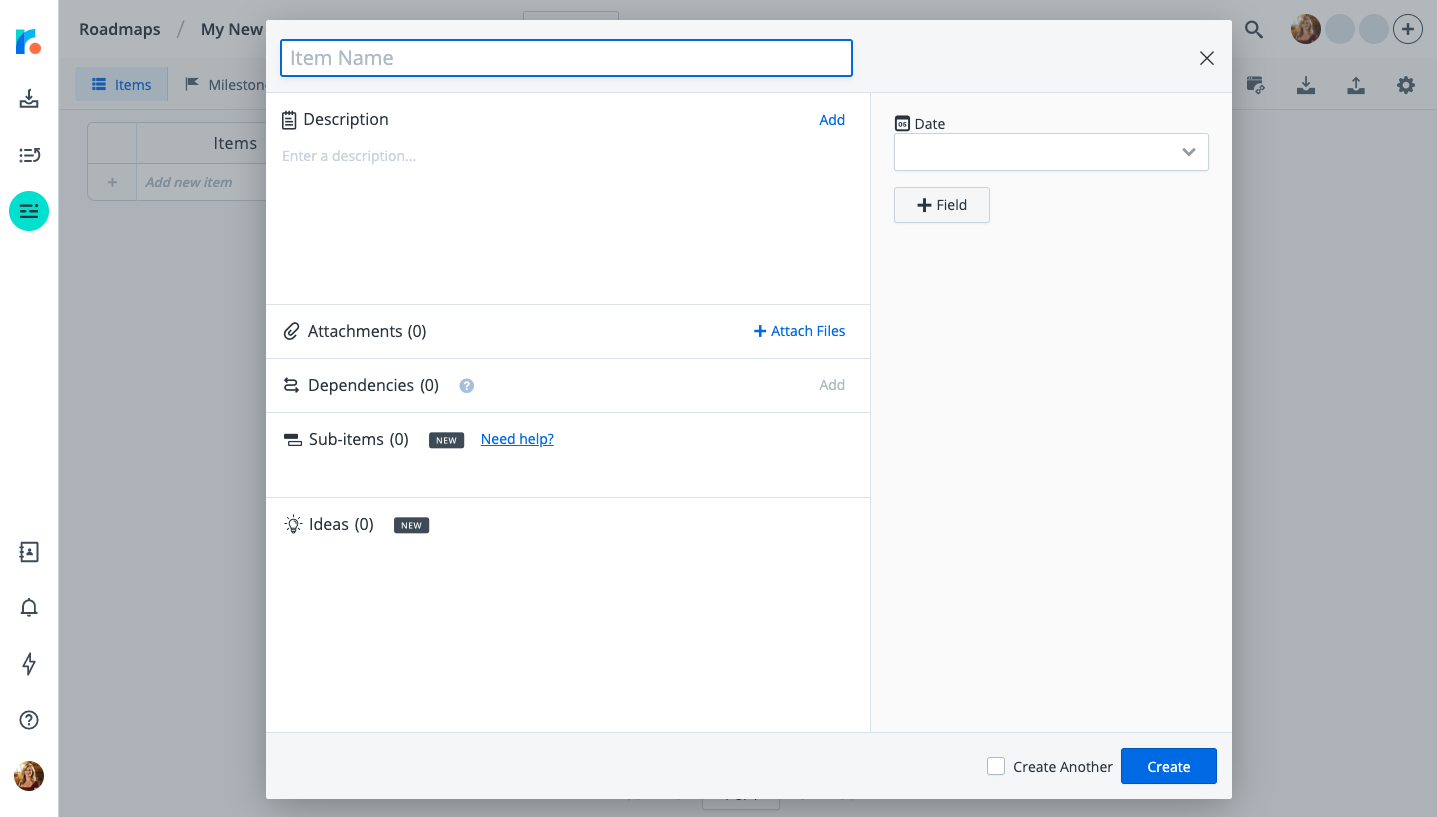
If you choose to click the + Item button to create your new item, you will be brought to the Item Card. From the item card, you can provide the same details you would be able to provide in the Items Table while being able to add a more granular description and file attachments to the item as well.
Once the item has been created, the item card can be accessed by clicking into the item name on your Items Table view and will also show a summary of any active Linked Items, Sub-items, and Linked Ideas for that respective item.
When creating multiple items that share the same fields, you can also create another item by checking the Create Another option in the bottom-right of the Item Card (beside the Create button). This will replicate all the same fields as the previous item created except for the item's description.
Inline Item Creation
The Items Table also has support for inline item creation, letting you quickly add items to your roadmap.
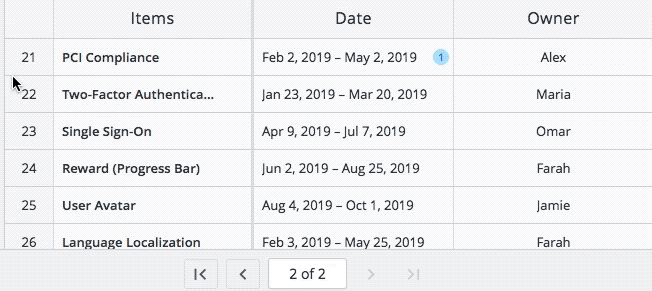
Navigate to the Items Table.
Hover your cursor between two rows and click the green + symbol to create a new item.
Input your item name and press Enter when done. You can add consecutive items without interruption.
Set the Item's Date
An item's Date can be a range of dates or a specific date.

Click inside the item's Date field to open the date picker.
To set a date range, select the Start Date and the End Date. To set a specific date, select it as the Start Date. The End Date is automatically set to the same date.
Click anywhere off the date picker to close it.
NOTE: You can also set the date(s) in the item card.

Fixed Date or Bucket?
If you don't have fixed dates for an item yet, you can add the item to a time bucket such as Soon or Future instead. Buckets let you be more flexible with scheduling so you can start roadmapping your strategy before you have all the pieces.
To add an item to a bucket, click the Bucket icon in the date picker instead and select the bucket in the drop-down.
Congratulations!
You've just added your first roadmap item. To view details of the item, click the items name in the item's table to open the item card. The item card is like command central for items, where you can view, edit, and manage everything associated with an item.
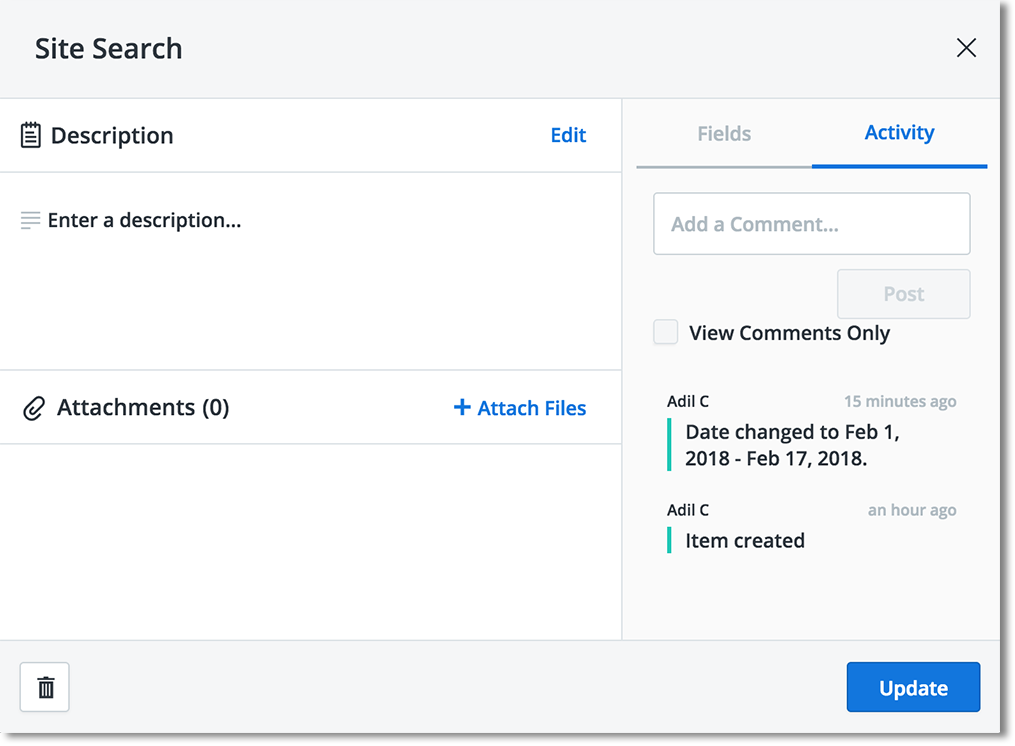
Import data from a CSV file
Instead of entering items by hand, you may have data that you want to import into a new roadmap. To do this, you export your data to a CSV file and then import the CSV file into Strategic Roadmaps.
Setting up the CSV
There's some simple formatting the CSV file needs to follow for the import to work: the file must have an Item field that maps to the roadmap's Items field and it must have field name headers.
To make creating this file real easy for you, we've created a CSV template you can download here. The template has Items, Description, and Start and End Date columns. It also has a Bucket column for items without fixed dates. If your data has other fields, just add them to the template and they'll be automatically added to the roadmap.
IMPORTANT: The items in the CSV should have either Start and End Dates OR a Bucket. If they have both, only the Buckets will be imported.
Starting the Import
Start the import of the CSV file in the Items Table.
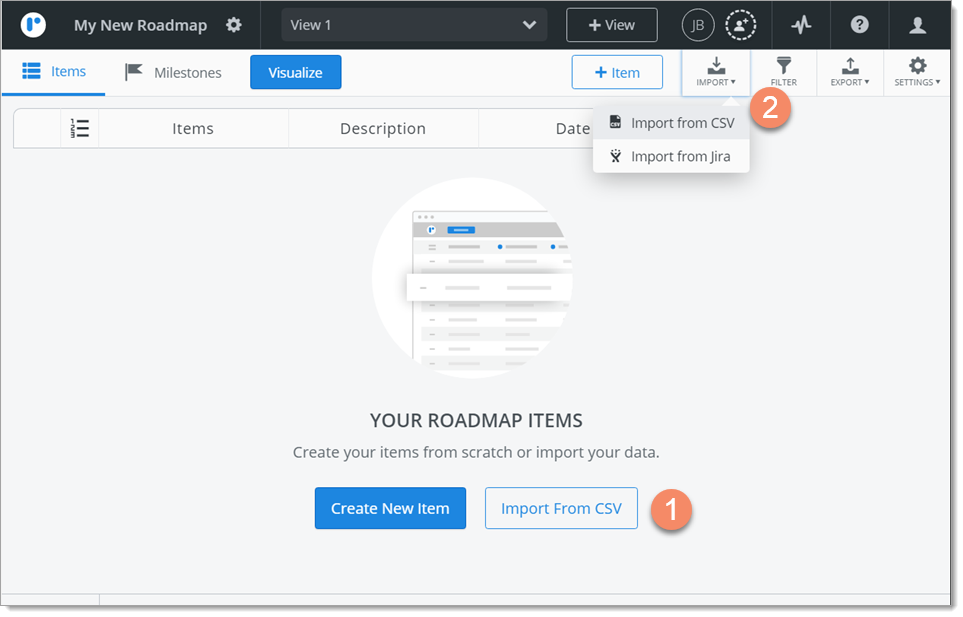
Click the Import from CSV button (appears only if the roadmap has no items).
OR
On the View navbar, click the Import icon and select Import from CSV in the dropdown.
Uploading the CSV
The Import CSV dialog walks you through the import, starting with uploading the CSV file.
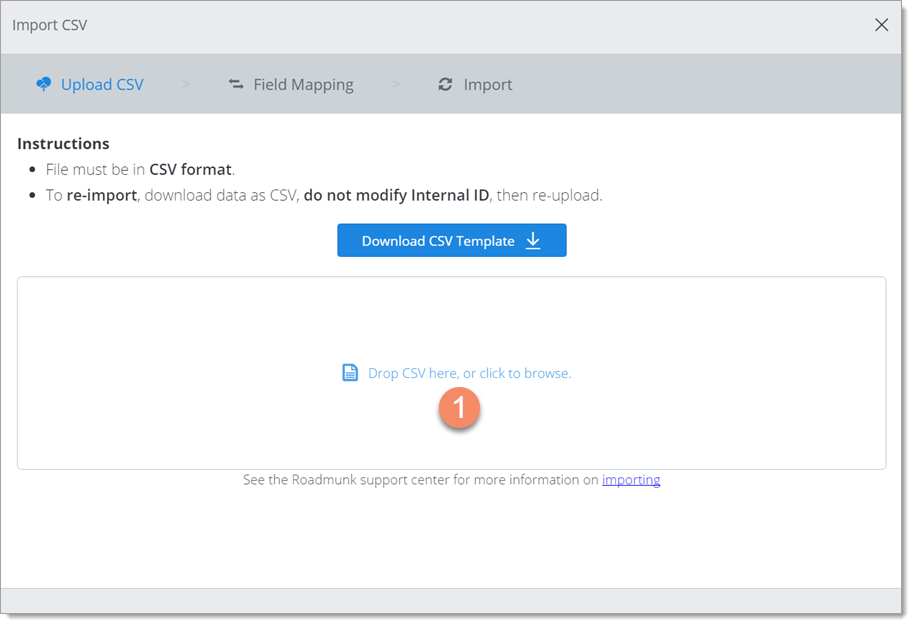
In the Import CSV dialog, drop the CSV file onto the Upload CSV tab or click to browse and select the file.
Checking field mappings
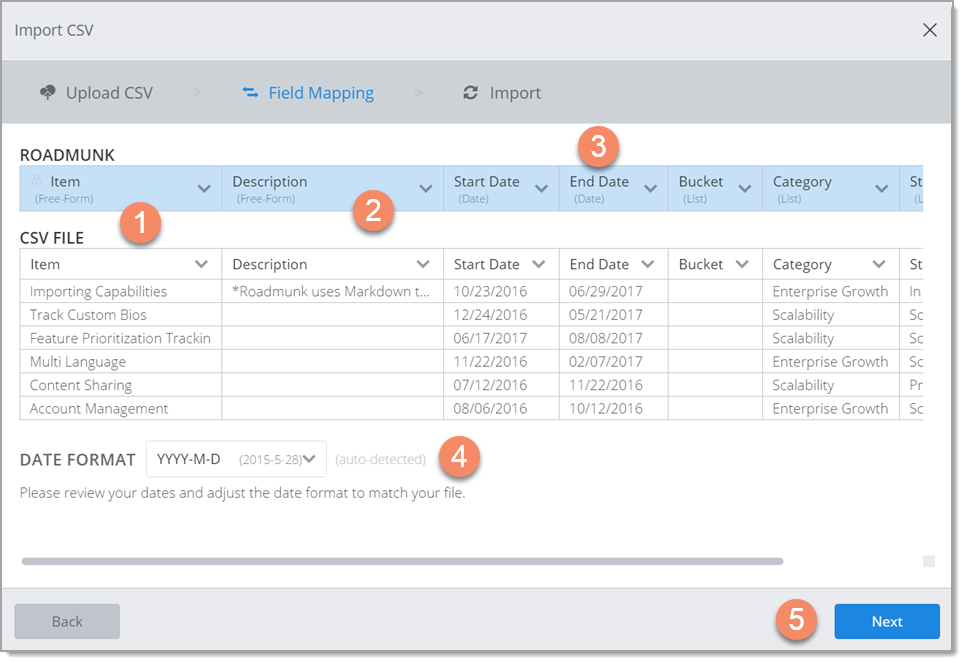
In the Field Mapping tab, you should see the Item field in the CSV mapped to the Item field in Strategic Roadmaps.
You should also see the remaining fields in the CSV mapped to corresponding fields in Strategic Roadmaps. If you decide that you don't want to import one of the fields in the CSV, click Remove in the field's Strategic Roadmaps dropdown.
If the CSV file has both Start and End Date AND Bucket, choose the one you want to import and remove the other. If an item has both, only the Bucket will be imported.
Strategic Roadmaps auto-detects the date format in the CSV and sets the format in Strategic Roadmaps to match. If see that the formats don't match, select the right one in the Date Format dropdown.
If everything looks good, click Next.
Finishing the Import

The Import tab shows a quick summary of how the items will be imported. For the tutorial we're importing to a new roadmap, so all the items are being imported and 0 are being updated.
To finish the import, click Update & Overwrite All.
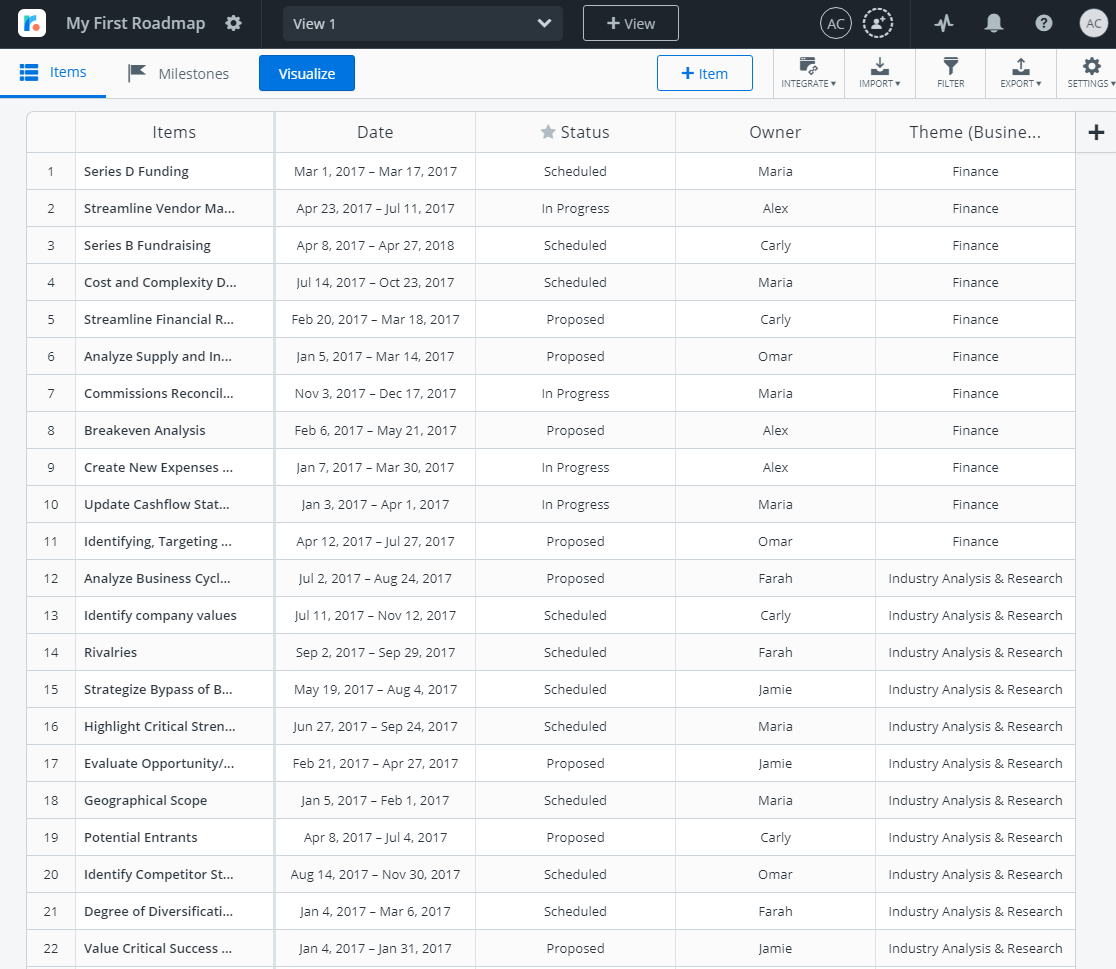
Success!
And voila, you can now see all the items from the CSV in the roadmap's Items Table.
What's next?
You've now seen how all roadmaps in Strategic Roadmaps start out with the two default fields: Items and Date. You've also seen how other fields are added to a roadmap through a data import. What's next is for you to see how to add a field to a roadmap manually.
Next Step
Step 3 - Add and Create Fields